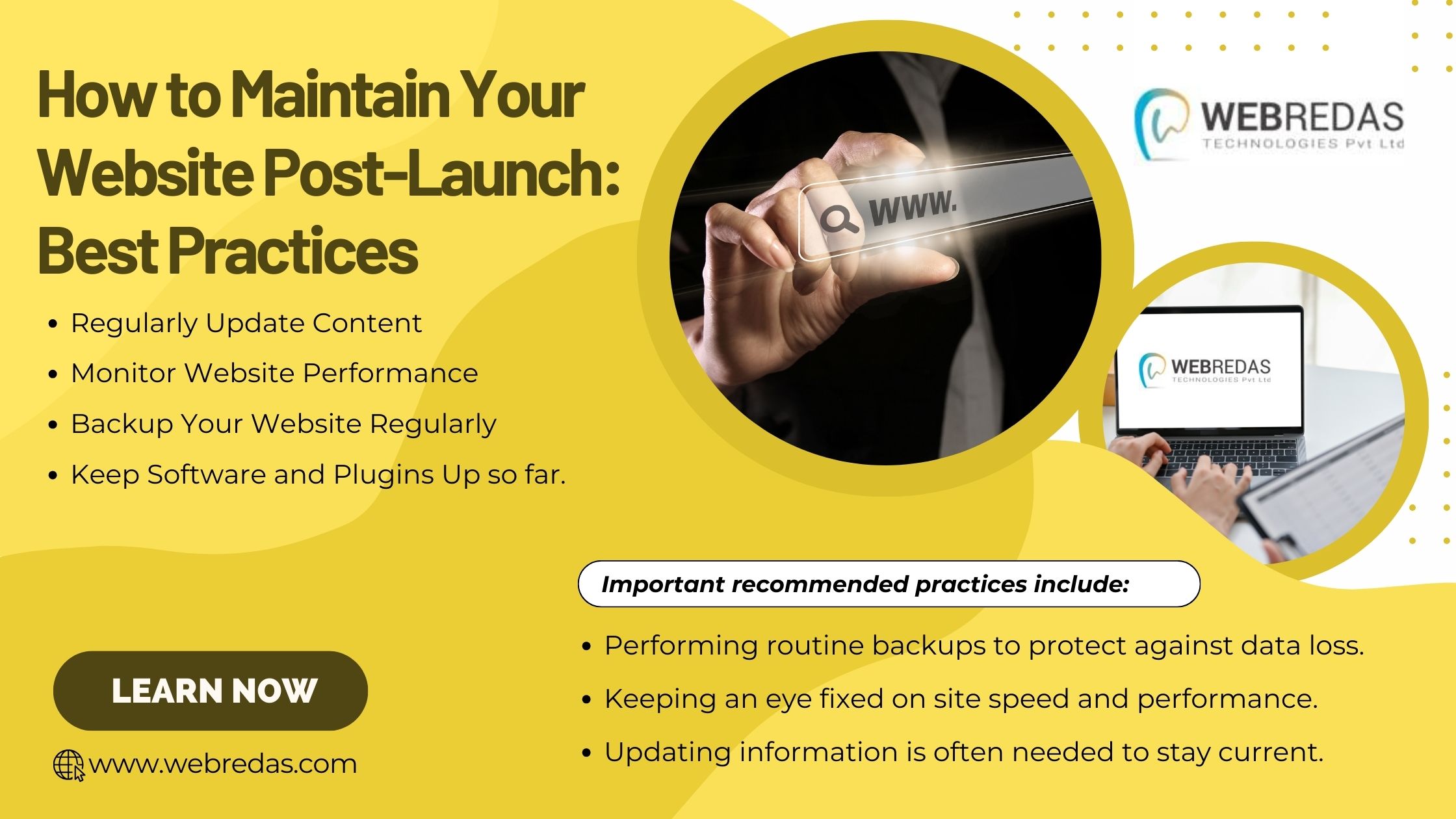A website’s post-launch maintenance is important to its success. The simplest possible user experience, security, and performance are ensured via routine updates and monitoring. Important recommended practices include:
- Performing routine backups to protect against data loss.
- Keeping an eye fixed on site speed and performance.
- Updating information is often needed to stay current.
To protect the website and user data, security procedures should be implemented. These procedures include establishing SSL certificates, upgrading plugins and software, and monitoring for malware. Enhancing the user experience and site performance involves testing forms and functionality. Monitoring for broken links daily and optimizing programs are also important.
Regularly Update Content
Maintaining a solid online presence requires routinely updating the fabric of your website. New and pertinent material keeps readers interested. It also tells search engines that your website is live and current. You’ll become referred to as an authority in your area and obtain more traffic to your website by regularly posting fresh content.
Consider using a content calendar to make sure you’re updating your material efficiently. You’ll stay organized, plan out your content strategy, and schedule frequent updates with the help of this application. Utilize analytics to monitor the effectiveness of your material and pinpoint any areas that would require revisions or enhancements. You’ll increase the effect of your content changes by continuing to require a proactive and planned approach.
Keeping your material updated not only helps your audience but also raises the program optimization (SEO) position of your website. Websites that often post new information are given preference by search engines and are displayed higher in search results. Additionally, material that’s updated often encourages users to return to your website and interact with your content by providing timely and important information.
Monitor Website Performance
For an internet site to achieve success overall and to provide the simplest possible user experience, performance monitoring is important. Website owners will find areas for improvement, increase user happiness, and eventually increase traffic and conversions by monitoring performance indicators. Additionally, it aids in quickly identifying problems and resolving them before they worsen, preserving the legitimacy and dependability of the website.
There are several methods and technologies available for monitoring the performance of internet sites. Well-known programs like Google Analytics offer insightful data on user behavior, website traffic, and performance indicators like bounce rates and page load times. Further aids in comprehending user preferences and improving website performance for improved outcomes include A/B testing, heat mapping, and performance audits.
Website owners should routinely check key performance indicators (KPIs), including page load speed, server reaction time, and the general responsiveness of their websites, so as to detect and resolve performance issues. These measurements could also be used to identify bottlenecks, optimize website components, and make the specified adjustments to enhance performance. Furthermore, collecting user feedback and conducting routine performance audits can yield insightful information for ongoing website performance maintenance and optimization.
Backup Your Website Regularly
Maintaining a frequent backup of your website is important to stop data loss. According to a web development company, backups of internet sites act as a safeguard against unforeseen circumstances like server outages, hacker attempts, or accidental deletions. Keeping backups allows you to scale back downtime and restore your website to a previous state.
A website is often manually protected via hosting control panels, backup plugins, or cloud-based backup services, among other techniques. Website files and databases must be downloaded locally for manual backups; backup plugins simplify this process by fixing recurring backups. Cloud-based services provide safe storage solutions for website data, guaranteeing redundancy and emergency accessibility.
You must plan frequent backups of your website to avoid data loss. Choose whether to line up daily, weekly, or monthly automated backups supported by how often you update your website. Frequent backups provide you with peace of mind and guarantee that the functioning and content of your website are safeguarded against unanticipated events.
Keep Software and Plugins Up so far
Updating plugins and software is important for maintaining the safety and functionality of internet sites. There are serious hazards related to outdated software, including security holes that hackers can use to access your website without authorization. You’ll lessen the prospect of security breaches by ensuring security updates are deployed by routinely upgrading software and plugins.
To minimize any possible problems during the upgrade process, make a backup of your website before updating any software or plugins. Updates could also be quickly installed by checking the plugin dashboard or content management system for updates on a frequent basis. To seek out any potential compatibility problems, it’s best to update one plugin at a time. Furthermore, confirm that upgrades are compatible with the setup of your website because it stands to avoid conflicts and guarantee seamless functioning.
When an internet site launches, upkeep tasks include content updates, performance monitoring, backups, security implementation, and program optimization. Website owners will guarantee their visitors a successful and safe online presence by adhering to those best practices. Website upkeep must be a top priority if you would like to offer users a flawless experience and earn their confidence.





